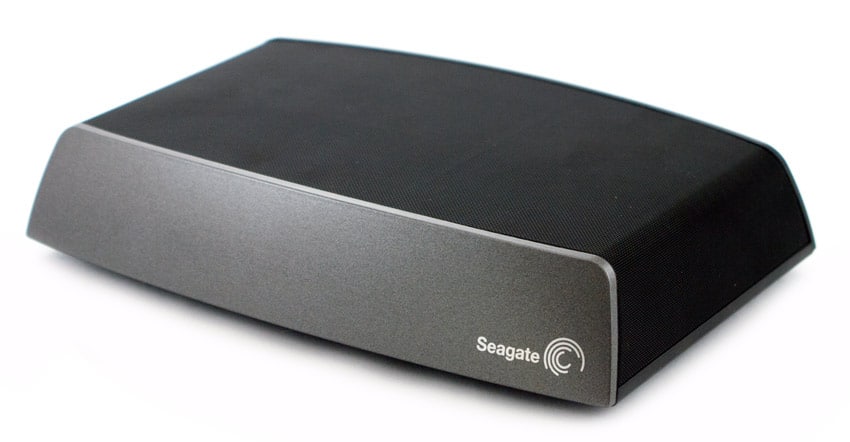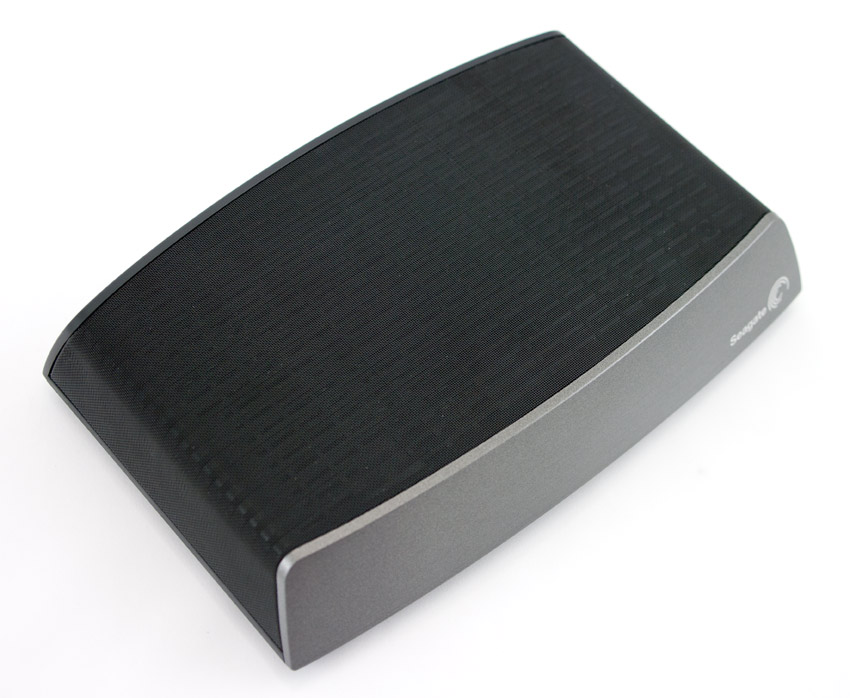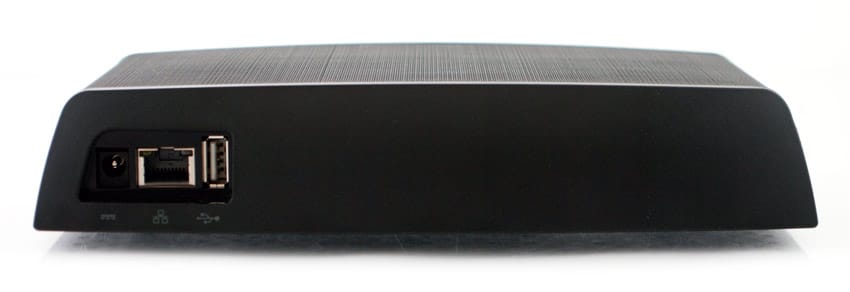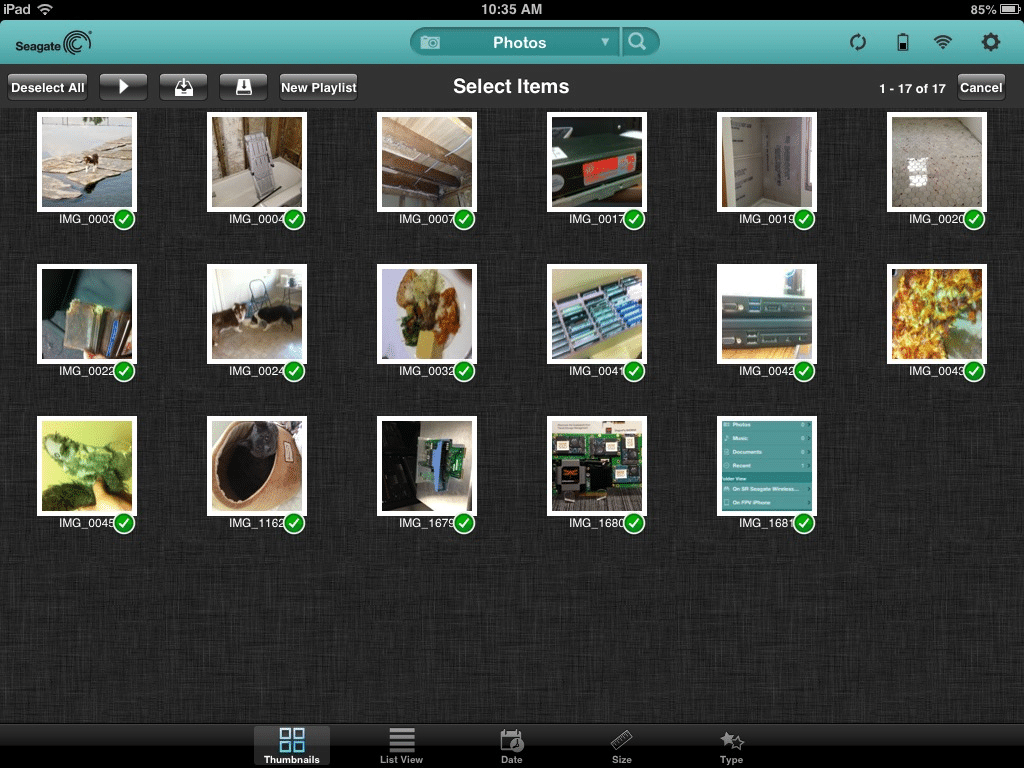
The Seagate Central is a consumer-friendly NAS device ranging up to 4TB in capacity that features an Ethernet port which enables users to centralize their content and share it over their wired or wireless network by plugging into a router. Behind the concept for the Central is the reality that most consumers have their content spread across flash drives, portable hard drives, several computers and mobile devices. The Central makes it simple to maintain that level of freedom to have files and media wherever they are initially stored, but while also creating more convenient access to have all of that content backed-up and readily-available in one place.

Additionally, the Seagate Central is device-agnostic to create an even more encompassing experience for users with a range of devices. The Central is compatible with the major browsers including Internet Explorer, Chrome, Firefox, and it works on Mac and PC computers supporting Windows XP or later and Mac OS X 10.6 or later. As for apps, the device has apps for iOS, Android, Kindle and Samsung via Smart Hub. Users receive up to five remove access licenses as part of their purchase. The apps enable users to upload and download files from anywhere using the Central Remote Access Service.
The Seagate Central has a street price of $159.99 (2TB), $179.99 (3TB) and $219.99 (4TB).
Seagate Central Specifications
- Capacities
- 2TB (STCG2000100)
- 3TB (STCG3000100)
- 4TB (STCG4000100)
- Interface Options: Ethernet
- System Requirements:
- Router with an available Ethernet port (Wi-Fi router required for wireless file access and backup)
- Internet connection for activation and Internet file sharing
- Web Browser: Internet Explorer 7, Firefox 3.x, Chrome 4.x, Safari 3, or later browsers
- OS: Windows 7, Windows Vista, Windows XP or Mac OS X 10.6 or later operating system
- Dimensions: (HxWxL) 1.7″ (42mm) x 8.5″ (216mm) x 5.7″ (145mm)
- 2-year limited warranty
Design and Build
The Seagate Central has a solid build that would fit in well at home with other electronics next to which it may be placed including cable boxes or routers. The unit features an all-plastic enclosure with a mesh grille for ventilation.
The front of the Central has Seagate branding over a deep gray plastic, while the top and sides of the device are composed of a mesh grille that largely resembles a speaker and helps to keep the included HDD from overheating. The rear of the device features the three ports tucked neatly into the left side: power, Ethernet and USB for adding additional storage via an external drive.
The underside of the Central is also ventilated, this time though with perforated plastic. Aside from that feature, the bottom houses four rubber feet for grip and a product label providing information about the Seagate Central. There is also an emergency pin-hole reset button.
Usability
To setup the Seagate Central, it really couldn’t be much easier. Users just need to plug the power cable and the included Ethernet cable in to the wall and router, respectively, and then the device will be ready in 3 minutes or less (which it shows with a solid green LED indicator light on the front right of the grille). From there, users type in the included web address to setup the device. Users utilize explorer to find their device, which is has Seagate in the name to make it simple. Double-clicking it enables users to register a username and remote access account so that they can access content outside of their home network. From there, the in-browser setup wizard says users can now access the private folder created with their user name. To view content using the Seagate Media app however, users will need to copy or save content to a public folder.
From here, Seagate has a setup tips section that runs users through all of the functions of the Seagate Central and explains how to make them work. Users can view or skip this, and then afterwards they arrive at the browser dashboard where there are configuration options. The most important features here are updating the firmware, adding USB external devices and setting up the Central to backup all the photos and videos stored on a user’s Facebook account – which is a very handy feature. To do that, users can input their FB account information and then the photos and videos begin downloading onto the Central automatically. This obviously takes some time, especially for users who store thousands of photos. We tried two FB accounts with about 1,500 photos each, and each time the Central took roughly 35 minutes to download the photos. Users’ experiences will vary according to their connection speeds. Overall, the FB feature is an incredible tool for users who might not have yet backed-up that content or want the added security of a duplicate or triplicate.
Seagate also provides a software download for the Seagate Central Dashboard should users require automated backups not supported by their OS. As the Central supports Time Machine, Seagate recommends utilizing Time Machine for Apple users. The dashboard also enables the other standard functions that allow users to upload or save content to/from social media sites, run diagnostics and adjust drive settings.
To access content, there are two main methods. Remote Access enables users to log-on to the Seagate website and use their log-in credentials to access content anywhere using a web browser. From Remote Access, users can access both shared public folders and private folders. We imagine that most often users will probably use the app which is available for iOS, Android and Samsung Smart Hub (DLNA) devices. The app doesn’t give the access as the Remote Access function though, as users cannot access private folders.
The Seagate Media app is the same one that other Seagate products use. The overall look and feel of the app is solid and feels high-end enough from a GUI design stand-point. Additionally, drag-and-dropping files is simple, and the overall functionality is really pretty good.
However, there are some issues that we encountered that would make the experience better for users. For instance, for some of the icons the function clearly matches the icon, but other icons are not so intuitive and might make users guess a few times before users get used to them. Another problem was moving files around. If the transfer completes but for some files fails, it might say, “The upload was completed but 25 files failed to upload. Please try again.” The issue here is that the app doesn’t tell you which files failed to transfer, leaving users guessing. Yet overall, the app does what it’s intended to do, and it adds even more value to the Seagate Central by making users’ content accessible on the go. For a more detailed review of the app, check out the Seagate Wireless Plus review where we detail more functionality.
Performance
Using our Consumer Testing Platform, we measured transfer speeds from the Seagate Central utilizing its Ethernet interface with a 5GB test file in IOMeter. The Seagate Central posted 46.16MB/s for sequential read and for 39.68MB/s sequential write. For large-block transfers, it measured 26.25MB/s for reads and 21.46MB/s for writes.
For comparables, we’ve chosen the Netgear Centria and the WD My Net N900 routers that both includes HDDs. For sequential transfers, the Netgear Centria posted 47.7MB/s read and 36.3MB/s write, while we measured 24.8MB/s read and 23.6MB/s write from the WD My Net N900. The Seagate Central and Netgear Centria have very similar speeds – both faster than the WD My Net N900.
Conclusion
The Seagate Central is an easy to setup and use NAS device that features as much as 4TB in capacity and an Ethernet port for sharing content over both wired and wireless networks. The Central is designed as a means for users to access their content by centralizing and consolidating it onto one device from their portable and external hard drives, computers, smartphones and tablets. With apps for iOS, Android, Kindle and Samsung via Smart Hub, users are free to have untethered access as well with their mobile devices using the Central Remote Access Service that is simple and intuitive to use.
The Seagate Central provides plenty of decent functionality. Most significantly, it enables users to centralize all of their content into one location that can be accessed remotely anywhere using a web browser or mobile device. The Central is also agnostic toward devices, browsers and operating systems, operating on just about any of them. Other features enable users to easily create backups of their content and to backup their entire Facebook library. That feature is unique and enables users with thousands of photos and videos that aren’t backed-up outside of Facebook to create a new copy or additional copies. That brings us to an important; the Seagate Central is a single-drive unit, and just as users should with any external or portable device, they should exercise caution and use more than one drive to backup content in case of data failure.
Beyond that, the app is functional, but needs some tweaks to make it more seamless. It has a good graphical design and looks well laid-out, but some of the icons are unintuitive and the app needs to be smoothed out still. As for performance, the Seagate Central provided solid throughput that matched the Netgear Centria and was stronger than the WD My Net N900.
Pros
- Design blends with other electronics
- Easily backup Facebook photos and videos
Cons
- App needs work
Bottom Line
The Seagate Central provides users a way to consolidate all of their storage into a single location for a backup that also enables remote access.



